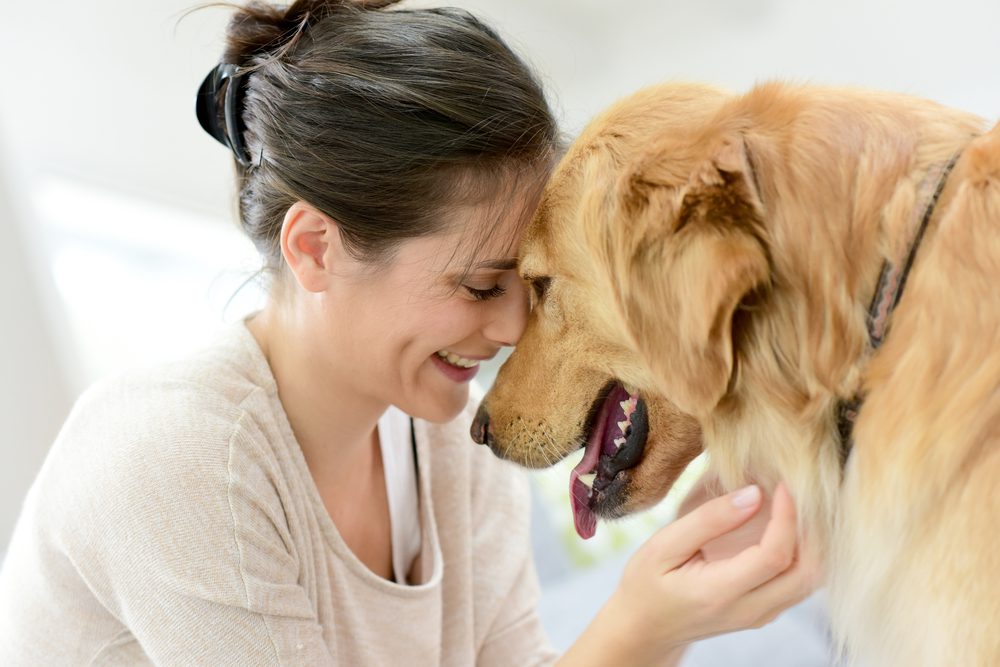Everyone feels anxiety at one point or another in their life, but for some, anxiety is like an invisible, debilitating disease. It keeps people from maintaining relationships, pursuing careers, traveling, and so much more.
Though there is no cure for anxiety, many treatments help one cope with and manage it. One such treatment is the love of a dog. Believe it or not, dogs can positively impact anxiety symptoms.
This article will teach you everything you need to know about dogs for anxiety, including how they can help, the different types of support dogs, and the qualities to look for when considering adopting a dog for anxiety. Finally, we’ll share our top picks of dog breeds that can help soothe one’s anxiety.
How Do Dogs Help With Anxiety?
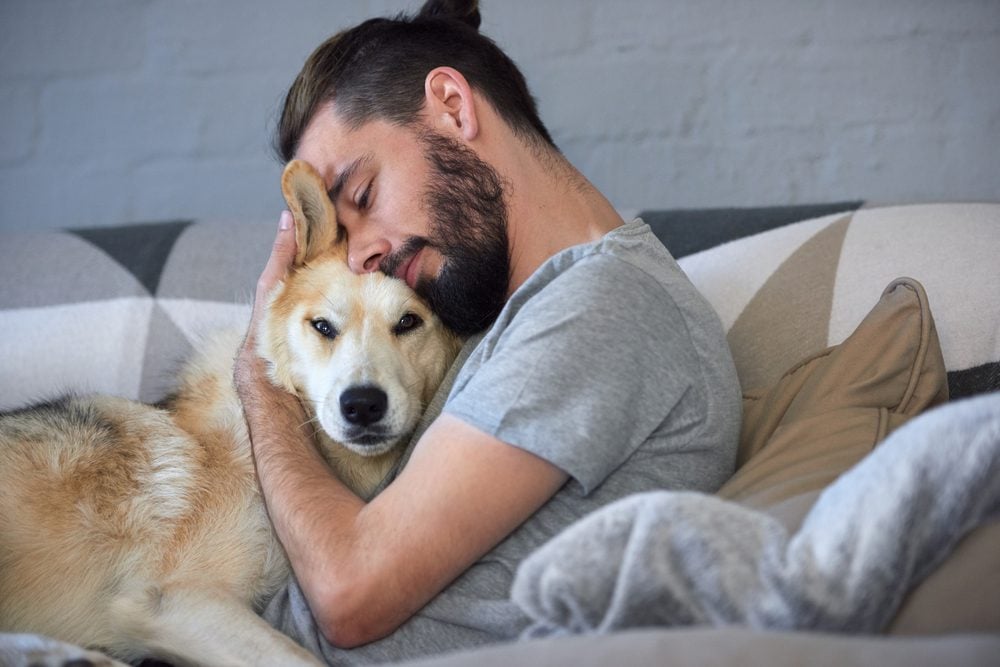


If you’ve ever owned a dog, then you can already attest to the wonderful sense of companionship and unconditional love they offer. What’s more, there are a number of scientific studies that prove dogs can benefit those suffering from anxiety.
Scientific Findings
Some of the most notable include stress tests where participants were accompanied by a friend, a spouse, or their dog. Those accompanied by dogs had the lowest heart rate and blood pressure before the test, less reaction to the test, and a faster recovery than participants who were not accompanied by dogs.
Another study from 2015 found that 21% of children in dog-free households met the criteria for anxiety. Comparatively, only 12% of children in households with dogs met the criteria for anxiety.
One study found that simply petting a dog for 10 minutes can reduce cortisol levels. Since cortisol is a stress hormone, it wouldn’t be inaccurate to say that petting a dog can reduce stress!
As you can see, there is plenty of research that supports dogs as an effective method of coping with anxiety symptoms. Though their presence alone can be comforting, dogs can be used in multiple ways to help with anxiety.
Dogs as Anxiety-Management Tools
Some dogs can be trained as Psychiatric Service Dogs. These dogs are trained to perform tasks to help reduce anxiety.
Such tasks may include:
- Body blocking to provide the handler with more personal space
- Preventing/interrupting repetitive behaviors
- Alerting to panicked behaviors
- Providing comfort or grounding
- Deep pressure therapy (the dog can place its entire body on the handler like a weighted blanket)
These are just a few of many different skills Psychiatric Service Dogs can be taught to perform in order to help their handlers. However, even dogs that are not trained can be great for anxiety. As we’ve mentioned, their presence alone can help people relax, but they also offer other benefits.
If you’ve ever suffered from anxiety, then you probably know a little about coping mechanisms. It is often suggested for people to focus on things they can see, smell, touch, taste, or hear instead of on their anxious thoughts.
Interacting with a dog by feeling the texture of their fur or paw pads or even smelling them can help one focus on the pleasant feeling of their beloved pet instead of on their anxious thoughts.
Another great thing about dogs is that they require exercise and thus you will have to take them for walks, exercising yourself in the process. While it’s easy to lack the motivation to exercise for our own well-being, when it comes to the well-being of our pets, we’re far more willing to get off the couch.
There are numerous studies that outline the importance of exercise for mental health and how exercise can benefit those suffering from anxiety. That’s why it’s such a great thing that dogs help their owners get moving.
Types of Support Dogs
If you’re interested in getting a dog to help with your anxiety (or perhaps already have one and are wondering if you need to take any extra steps), then you should learn a little more about the different types of support dogs.
The three types of support dogs are service dogs, therapy dogs, and emotional support animals. We’ll also discuss companion dogs because, as you may have guessed, even owning a dog solely for companionship can help with anxiety.
Service Dogs
Service dogs are those that are trained to perform tasks that benefit their owners in some way. When it comes to anxiety, the type of service dog one would have is usually referred to as a Psychiatric Service Dog.
We mentioned earlier that these dogs can perform a number of tasks to relieve anxiety or otherwise aid their handler. Not only can they use a number of techniques to calm down their handlers, but they can also do things like remind you to take medication and even fetch the medicine for you.
Service dogs enjoy certain benefits that other dogs don’t. They’re allowed to access public places such as businesses and can travel with you in the cabin of an airplane. They can also live with you anywhere, even in housing that typically does not allow dogs.
You can get Psychiatric Service Dogs from organizations, but they often cost upwards of $10,000. If you’re interested in a Psychiatric Service Dog and don’t have that kind of money but do have some time, then you could train a dog yourself. Learn more about training your own Psychiatric Service Dog here.
Therapy Dogs
Therapy dogs visit places like hospitals, nursing homes, schools, or disaster sites to provide comfort and relief to the people there. Though they are not service dogs and do not have to be trained for any specific tasks, they do need to receive certification before they can be brought to visit the places listed above.
This is because it is important for therapy dogs to be well-behaved. Imagine a large dog visiting a nursing home and jumping on the residents, potentially knocking them over – it just wouldn’t be safe.
Therapy dogs need to have a calm but friendly demeanor. This way, they can safely provide comfort and happiness to those they are visiting.
Emotional Support Animal (ESA)
Technically, an ESA could be any type of animal, but we are focusing on dogs in this article. ESAs are not service dogs or therapy dogs. In fact, they do not need any special training at all. What separates them from companion dogs is certain perks that they get.
Emotional Support Animals are allowed to live with their owners anywhere, even in places that do not allow dogs. However, in order for your dog to be deemed an ESA, you have to be evaluated by a professional who “prescribes” the dog as part of your treatment.
If you’re interested in registering your dog as an Emotional Support Animal, you can do so through our website here.
Companion Dogs
Companion dogs do not receive any extra rights like ESAs or service dogs, but if you do not need those rights, then a companion dog may be perfect for you. As we explained in our previous section, even just petting or being around a dog can reduce stress and positively impact your health.
If you don’t have the money to buy a service dog or the time to train one yourself, you may still benefit from a companion dog. Any dog will require effort on your part, but with a companion dog, training is less rigorous as they will only need to know whatever you deem important.
What To Consider Before Adopting a Dog
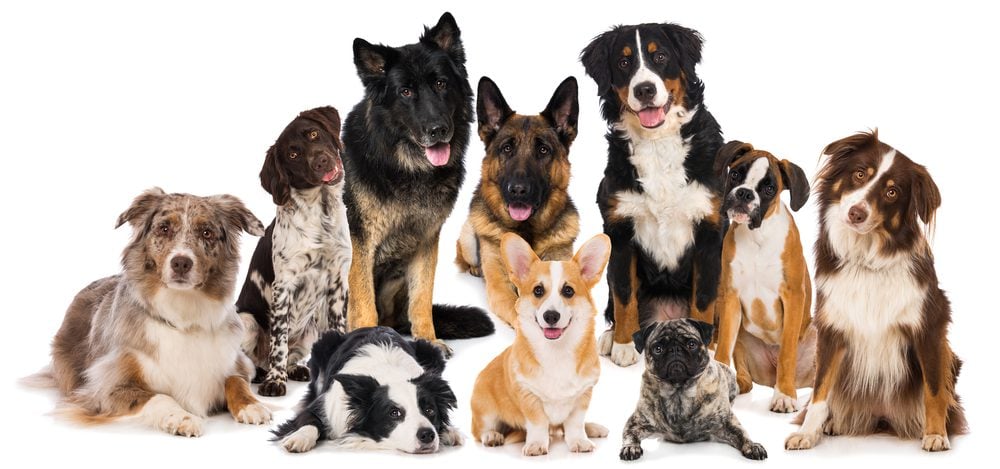


It’s important to consider what qualities you would like your dog to have, as well as what qualities are best for dogs being used to help with anxiety. We aren’t talking about looks (though all of the breeds we will recommend are pretty adorable). Once you know what qualities to look for, you can find a breed that tends to present those qualities.
Temperament
Perhaps the most important quality to consider is temperament. Since your dog is supposed to provide comfort during anxious moments, you’ll want a dog that is a real people-lover and wants to be in your presence. At the very least, the dog should be quite friendly, and it wouldn’t be bad if they enjoyed cuddling.
You may also want to consider looking for a naturally calm dog. Some breeds just like to bark, whereas others bark due to high prey drives or territorial tendencies. The barking may cause more anxiety for some people, especially if one is anxious about intruders or their personal safety. On the other hand, some may prefer a dog that alerts them to changes in the yard. It’s up to you to decide if you’d prefer a laid-back dog or a rambunctious one.
Energy Levels
Once you get a dog, it will be your responsibility to care for them properly, and this includes exercise. Though exercise is great for your own health, you need to be realistic about the amount of time you can dedicate to your dog.
High-energy breeds like border collies or huskies would not be a great choice for someone who can only offer 30 minutes of exercise per day. On the other hand, if you have the time and enjoy outdoor activities like hiking, jogging, or even biking, then you’ll need a dog that can keep up.
Grooming Requirements
Dogs are much like children because they depend on their owners to take care of them. Aside from feeding and exercising your dog, you’ll have to groom them.
Some breeds don’t need much grooming, and you can simply give them a brush every week or two. Other breeds, however, have coats that require special maintenance, and you may need to put more work in at home or hire a professional.
You should consider how much time and money you are willing to put into your dog’s grooming needs. If you’d prefer a low-maintenance pet, then you’ll want to stick to breeds with short coats. If you don’t mind bringing the dog to the groomer, then go ahead and get the dog with the luscious locks.
Size
Finally, you should consider size. If you live in a small apartment, then you may not have the space for a large breed. Similarly, small dogs can sometimes be less expensive in terms of food and even veterinary care, and they’re also easier to travel with.
Larger dogs, on the other hand, may be more helpful to some experiencing anxiety because their size allows for a full-body hug (large dogs make fantastic “little” spoons). They may also have more endurance than small dogs if you’re into sports or exercise.
The 10 Best Dog Breeds For Anxiety
Now that you’re well-educated about dogs for anxiety, let’s talk about breeds. We would argue that it is most important to find a dog with a good temperament that meets any other prerequisites you have (such as size).
That is to say, the breed is far less important than the dog itself. However, if you’re planning to get a puppy or aren’t sure where to start in your search for a dog, then established breeds are worth considering because they’ve been bred to maintain certain qualities and characteristics, so you know what to expect.
Therefore, we’ve compiled a shortlist of breeds that we think have characteristics that would make them suitable for helping those who suffer from anxiety. Let’s take a look.
Large Breeds
We’ve listed these breeds in no particular order. They all have great qualities, but everyone’s struggles with anxiety are different. What triggers one person may not trigger another.
Therefore, each person’s needs when it comes to dogs will be different as well. This makes it impossible to make generalizations about which breeds are better than others… so we won’t!
1. Labrador Retriever



Labrador retrievers are a favorite when it comes to companion animals, but they’re also an incredibly popular pick for people training service dogs. This is because they’re intelligent, have a friendly demeanor, and tend to be people-pleasers.
Labs are usually great with kids and love to play (especially fetch), making them wonderful family dogs. They are smart, eager to learn, and relatively easy to train. Just keep in mind that they shed a lot, and some can be quite large (we’ve seen labs over 80 lbs!).
2. Great Dane
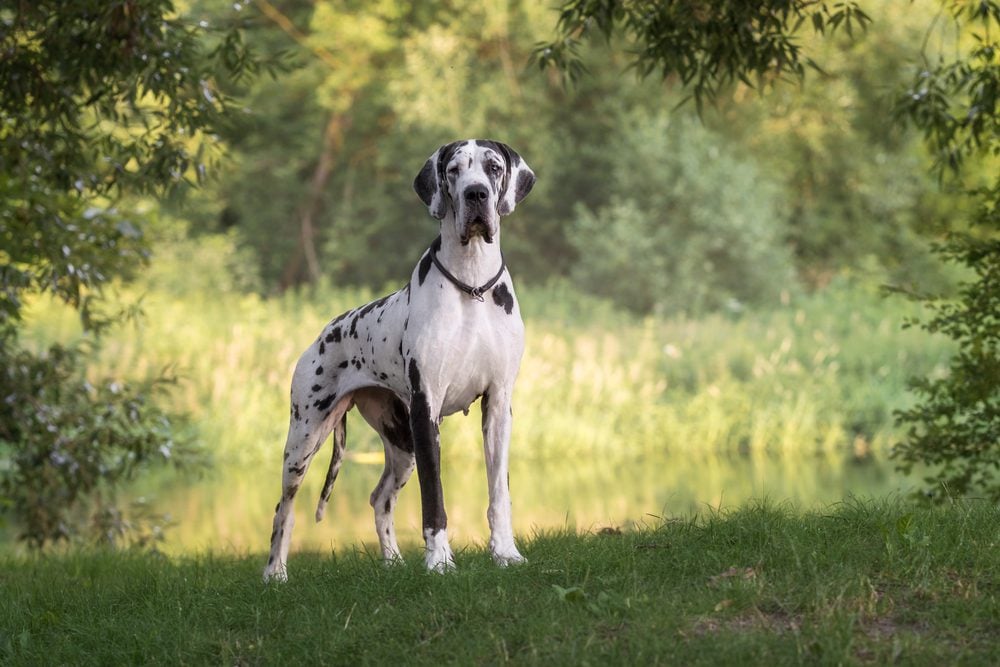


Great Danes have long been considered gentle giants. When it comes to their size, they are truly massive dogs, but they have a sweet nature and tend to be good with kids. They’re people pleasers, which makes them easier to train.
Due to their large size and somewhat protective nature, they make for great watchdogs. If you are often anxious about your safety, then a Great Dane may help calm such fears.
3. German Shepherd
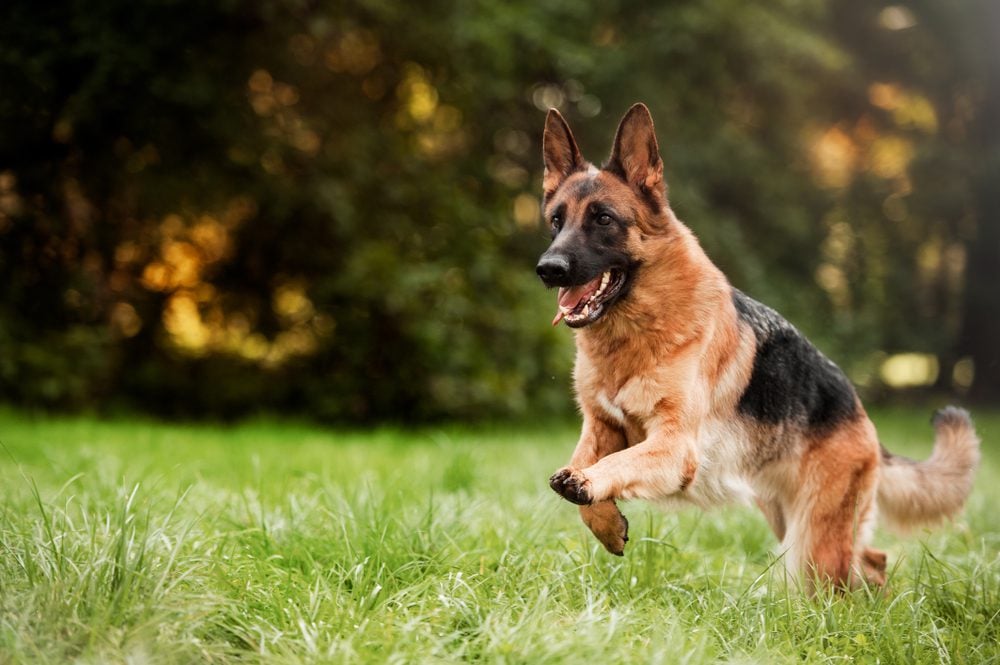


The German shepherd is another breed that is a popular pick for both companion and service roles. German shepherds are loyal and affectionate with their families and even good with children.
They are quite intelligent but also eager to please. This means they take easily to learning new skills, which is one of the reasons they excel as service animals.
German shepherds are also courageous and alert, which makes them great watchdogs. It is said that it is not uncommon for this breed to put its life on the line to protect members of its beloved family. If safety is a concern, having a German shepherd around may help calm your nerves.
4. Golden Retriever



We hate to keep repeating ourselves, but the golden retriever is yet another breed that finds itself popular as both companion animal and service dog. This breed is relatively easy to train and tends to be eager to please.
Goldens are very friendly, playful, and good with children. They get along well with and are unreserved with strangers, both of the human and dog variety. If you’re struggling with social anxiety, this breed will make introductions for you and enjoys being the center of attention so that you don’t have to.
If we had to pick a downside, it’d be that their long coats may need slightly more care than the other short-coated breeds on this list. However, brushing once a week is usually enough to prevent matting.
5. Standard Poodle
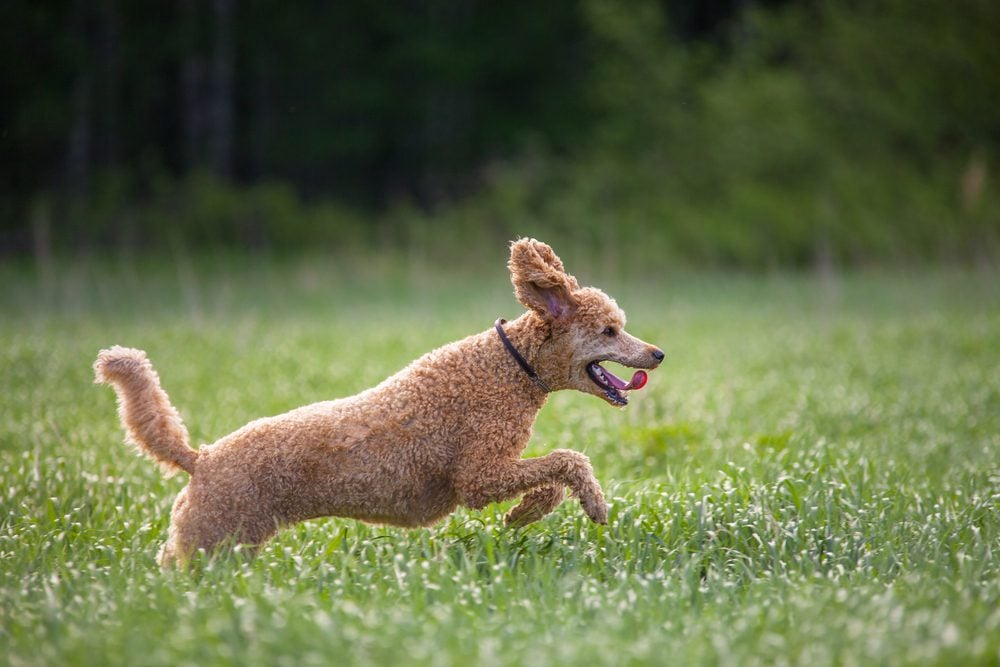


There’s no such thing as a hypoallergenic dog, but the standard poodle (and miniature and toy poodle) comes close and may be better for those with allergies. However, this breed does require more care in terms of grooming, with most owners preferring to pay professionals to handle the coat.
In terms of temperament, poodles are friendly, affectionate, and good with children. They’re eager to please and intelligent, making them relatively easy to train.
They’re also rather athletic and can even be used to hunt; if you need a dog to keep up with an active lifestyle, the poodle shouldn’t be overlooked. Finally, poodles make good watchdogs, though they do tend to bark more than some other breeds.
Small Breeds
Once again, the breeds in this list will not be in any specific order because the perfect breed for you may not be the perfect breed for someone else. That said, let’s look at some of the best small dog breeds for anxiety.
1. Dachshund



Dachshunds may be small, but they’re very brave. Originally bred for hunting, they make great watchdogs, though some people may be annoyed with how much dachshunds like to bark.
While they tend to be quite loving with their family members, they aren’t always tolerant of young kids. They have big personalities and love to play. Though occasionally stubborn, dachshunds are still mostly receptive to training.
They can have short, long, or medium-length coats, so you can choose the type that suits your needs best. Dachshunds also come in two sizes: miniature and standard. The minis max out at 11 lbs, whereas the standards are between 16 and 32 lbs.
2. Italian Greyhound
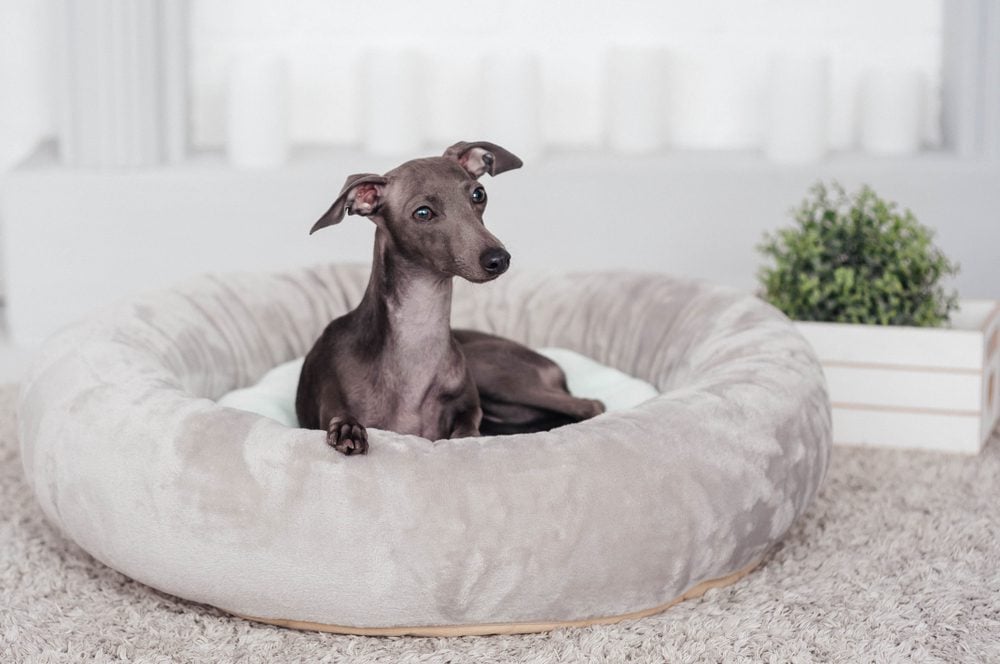


If you’re looking for a small breed with a low-maintenance coat, then check out the Italian greyhound. Their short fur means you won’t have to do much more than occasional brushing. If you like to cuddle, this breed is also quite loving toward their owners and is friendly with strangers as well.
Italian greyhounds are also good with other dogs and are not considered a high-energy breed. This isn’t to say that they aren’t playful, only that owners with busy schedules will have an easier time meeting an Italian greyhound’s exercise needs than some other breeds.
3. Pembroke Welsh Corgi
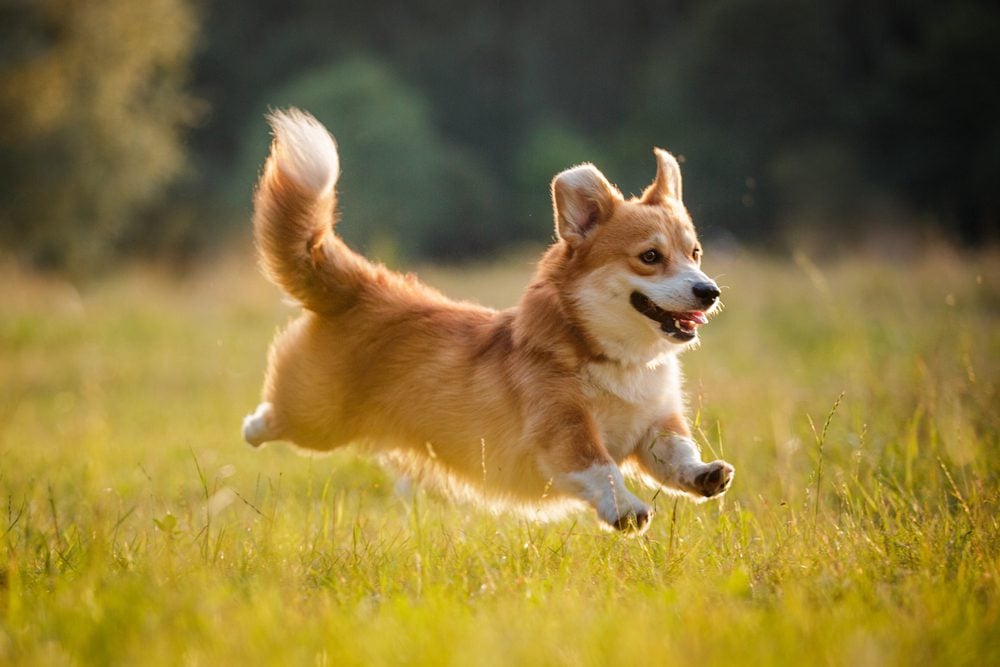


Corgis are loving and cuddly toward their families and friendly around strangers. They like meeting new people, which can be a good or a bad thing depending on the nature of your anxiety. However, they do still make for good watchdogs as they are vocal and like to keep an eye on the yard.
They’re quite playful and energetic and may require more activity than you’d expect based on their size. Training a corgi usually isn’t too challenging as most are receptive to positive reinforcement techniques.
Perhaps their greatest flaw is that they are shedders. If you have allergies or simply don’t want to accept that you’ll often have dog hair on your clothes, then you may want to check out a different breed.
4. Yorkshire Terrier



Yorkies are another great option for people with allergies as their long coat is more like human hair than fur. Of course, the tradeoff is that this type of long hair requires daily brushing to prevent mats or regular trips to the groomer to keep the fur coiffed.
Yorkies have great personalities: they’re affectionate with family, good with kids, and friendly toward strangers. They have a fair bit of energy despite their small stature and are relatively easy to train.
They’re playful, though they can get a bit vocal. This latter trait makes them viable watchdogs, as they will certainly alert you to anything they deem suspicious outside.
5. Papillon



Papillons are affectionate dogs that even do well with children. They’re friendly toward strangers, though they can be quite alert and are considered a vocal breed. These qualities can make them good watchdogs as they’ll certainly alert you to anything they find to be out of the ordinary.
Papillons are very playful but eager to please when it comes to training. These two characteristics coincide very well if you use positive reinforcement to make training feel like a fun game.
The Right Dog Is the One That Soothes Anxiety
Searching for a specific breed of dog can sometimes be helpful if you know exactly what characteristics you want the dog to have. However, any breed, even a mixed breed, could help calm anxiety.
This is because the way dogs help often has to do more with their presence and unconditional love than any other factor. Of course, if you’re hoping to train a dog to be a Psychiatric Service Dog, then you may want to consider picking a breed that is known to excel at service work, like Labradors, German shepherds, or golden retrievers.
Otherwise, it’s all about finding a dog that suits your lifestyle and needs. We suggest thinking about what you want in terms of temperament, energy level, grooming needs, and size. Then, you can search for a dog that fits the bill.
